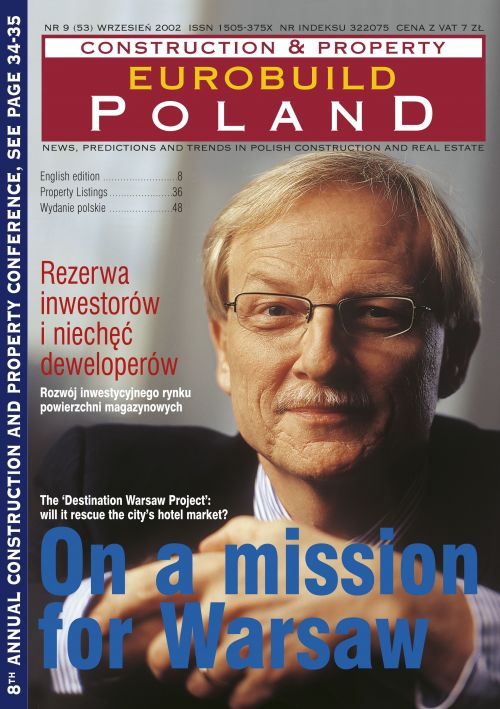"Piling and foundation engineering are really too costly to build high-rise
buildings in Warsaw", a construction manager told us. However, because of
land prices (e.g. USD 2,000/ sqm.) and the low supply of plots in the city
centre, investors are prepared to pay. We look at two projects near the ONZ
roundabout.
Construction of the Inter-Continental hotel is in progress on the plot of
land between the Warsaw Financial Centre and Warsaw Towers. According to
engineer Janusz Zytomirski of Porr, (an Austrian General Contractor), with a
steel fin on the roof it will reach 163 m. and become the highest
reinforced-concrete skeleton building in Poland.
Protected against the elements
Because of its reinforced-concrete structure, the building is very rigid, and
less susceptible to wind. The hotel, whose top storey will stand at 153 m,
will go out of plumb by no more than 14 cm. This would be 32 cm for a
building of similar height, but built on a s






























































